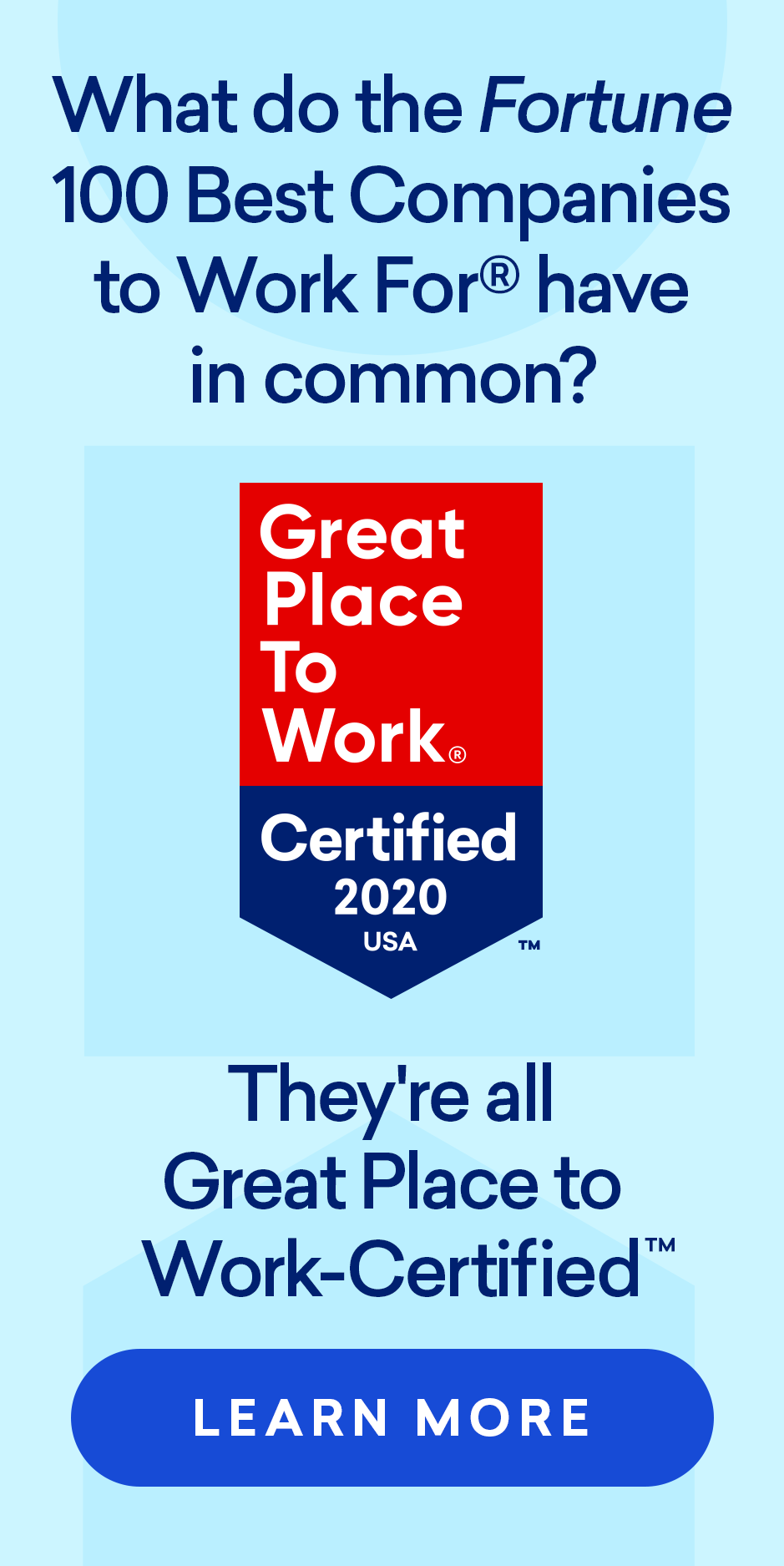When it comes to engaging employees, being small offers distinct advantages
At Great Place to Work®, we often hear small and medium-sized companies (those with fewer than 1000 employees) bemoan their size as an impediment to building a great workplace. Smaller budgets, the rationale goes, leave less room for flashy perks, lavish bonuses, swanky campuses, and the like.
What smaller businesses don’t realize is they actually have a distinct advantage over their larger counterparts, an advantage that is directly conveyed by their size. Consider this, the benchmark for the statement, “All things considered, this is a great place to work,” from Great Place to Work’s Trust Index© Survey, is 5 percentage points higher for the Best Small & Medium Workplaces than for the FORTUNE 100 Best. Statistically this may not be staggering, but year over year, the benchmark for the SMEs is higher, indicating that these supposed limitations are not limitations at all.
So where does this advantage come from? Employee engagement in part results from the quality of the relationship between employees and management. Being smaller in size, conveys an advantage in that managers have more opportunity to connect with employees face-to-face, and know their employees as people. What’s more, employees have access to senior leadership, including the CEO, and are often on a first-name basis with those executives who employees at larger companies only experience at town hall meetings, or annual visits.
If you are a small business looking to build a great workplace and increase employee engagement, here are a few tips for how you can leverage your size to your advantage:
- Have an unequivocal open door policy. All the way open, all the time. Some companies even have senior executives sit in cubicles alongside employees, forcing day –to-day interactions.
- Provide the benefits that matter. A swanky onsite fitness center may not be in budget, but a subsidy for a local gym membership or building an outdoor basketball court may have an even greater impact – supporting wellness, building camaraderie, and providing a special benefit on an accessible scale.
- Host a roadshow. Employees in the home office should not be the only ones who get to interact with leadership.
- Listen. Provide multiple, open access channels for employees to express their ideas, opinions, and concerns with leadership, and then respond to every inquiry or comment.
- Send a letter to employees at home. Several CEOs have made a tradition of sending an annual Thanksgiving letter to employees’ homes, expressing appreciation for everything employees have helped the company achieve over the course of the year.
- Provide non-work opportunities for employees to interact with each other. You don’t need to rent out Yankee Stadium or hire a band to provide employees with opportunities to get to know each other as people. Teams often have the most fun and experience the most engagement when working together on volunteer projects.
- Have the CEO take new employees to lunch. Get to know employees from the onset. Initiating relationships and opening channels of communication early on, sets the stage for sustained open interaction.
- Form a culture committee. To keep the entire team aligned with your company values, appoint a committee to be your cultural ambassadors. They can welcome new employees, help direct celebrations for company accomplishments and milestones, and bring your company values to life every day.
- Celebrate accomplishments. Do you take the time to congratulate individuals and teams on a job well done? Do not underestimate the value a simple thank you or public acknowledgement can have on employee engagement.
- Connect employees to the greater good. When employees feel connected to the company mission or like their work is contributing to a goal that is greater than profits, they feel like their work has purpose. A sense of meaning is priceless and costs nothing for an employer to cultivate.
If these tips sound like practices you're already implementing at your company, then you should apply to be named on the
2012 Great Place to Work: 50 Best Small & Medium Workplaces.
Leslie Caccamese serves as Senior Strategic Marketing Manager with Great Place to Work® Institute.














